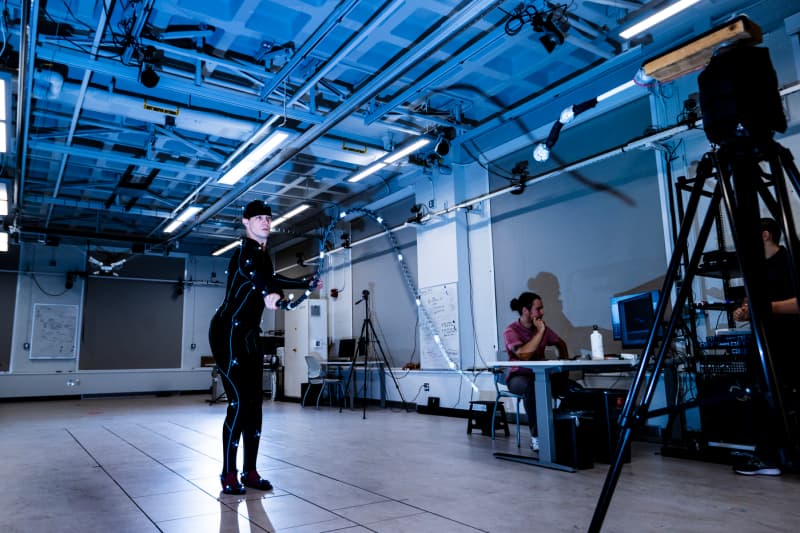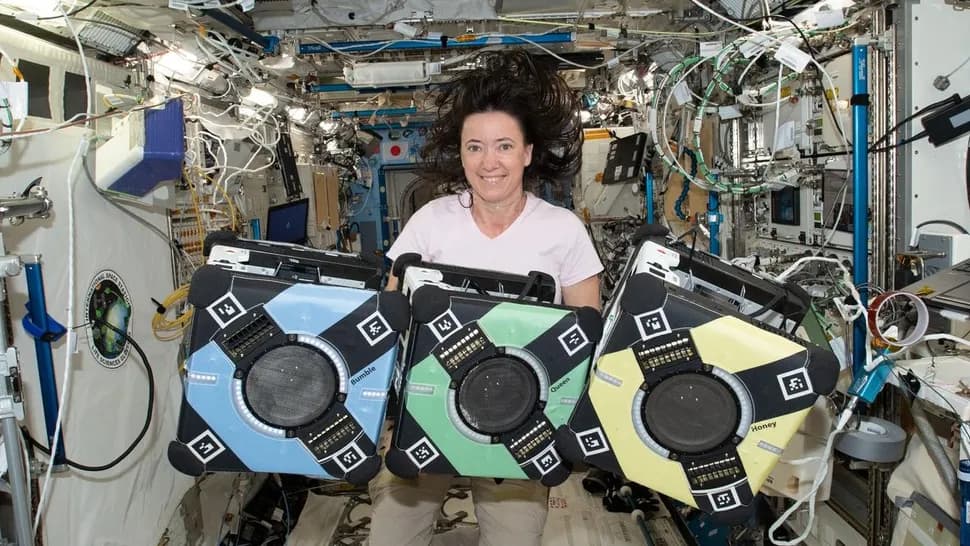
The Robotics Roundup is a weekly newspost going over some of the most exciting developments in robotics over the past week.
In today’s edition we have:
- Why do robots need to use whips? Researchers test the extremes of human motor control to advance robotics
- NASA’s Astrobee robot ‘Honey’ flies home to its International Space Station hive
- The robots of #IROS2023
- A human-inspired robotic hand based on a modular structure
- This Robot Could be the Key to Empowering People With Disabilities
Why do robots need to use whips? Researchers test the extremes of human motor control to advance robotics
Researchers at Northeastern University’s Action Lab are studying the intricate movements of whip performers to gain insight into how humans manipulate complex objects. Led by Professor Dagmar Sternad, the research group hopes to understand the dynamics of whip cracking, which involves complex interplay between the whip and the person using it. The study aims to contribute to the development of robotic applications, as current robots lack the fine-tuned motor control humans possess when handling whips. The researchers have collected data from both novice participants and expert whip performers, using motion capture technology to analyze the coordination of body movements and whip movements. The findings could have implications not only for robotics but also for neuroscience and clinical science, such as stroke rehabilitation.
NASA’s Astrobee robot ‘Honey’ flies home to its International Space Station hive
NASA’s yellow Astrobee robot, named Honey, has successfully returned to the International Space Station (ISS) after being sent back to Earth for repairs. The Astrobee fleet, which includes Honey and two other cube-shaped robots named Bumble and Queen, is designed to assist astronauts by performing tasks such as documenting experiments and taking inventory. Managed by NASA’s Ames Research Center, the robots use electric fans for movement and have DYNAMIXEL servo powered perching arms to grasp handrails around the ISS. They have already completed 750 hours of research on the ISS and are being tested for future applications. The Astrobee robots are modular and can be upgraded, providing researchers with diverse capabilities for experiments in space.
The robots of #IROS2023
The International Conference on Intelligent Robots and Systems (IROS) recently took place in Detroit, showcasing cutting-edge research and commercialization in robotics. The conference focused on future directions in robotics and provided an opportunity to network with leading roboticists. Highlights included presentations by Silicon Valley Robotics members, discussions on ROS 2 by Open Robotics and Intrinsic, and the presence of telepresence robots sponsored by OhmniLabs. There were also various rolling and roaming robots exhibited, such as Diablo, Deep Robotics, Unitree Robotics, and more.
A human-inspired robotic hand based on a modular structure
Researchers from the Massachusetts Institute of Technology (MIT) have developed a highly precise robotic hand that is based on a modular structure, making it easier to fabricate and upscale. The hand, described in a paper published in the 2023 IEEE International Conference on Soft Robotics, combines soft materials with rigid components and can perform advanced movements. The modular design allows researchers to adapt the hand for different applications by adding or removing fingers and rearranging its components. The bones of the hand can be 3D printed, while magnets, sensors, and cables can be readily sourced. The researchers created a prototype of the hand with five fingers and demonstrated its ability to grasp various objects. Further development and testing could lead to the integration of the robotic hand with other limbs to create humanoid robots with enhanced manipulation capabilities.
This Robot Could be the Key to Empowering People With Disabilities
Henry Evans, a quadriplegic, saw the potential of robotics in regaining his independence after becoming disabled. Collaborating with Georgia Tech and Willow Garage, he worked on the Robots for Humanity project to develop assistive technologies. The PR2 robot initially helped him but was too expensive and impractical. In 2017, Georgia Tech professor Charlie Kemp and Aaron Edsinger founded Hello Robot and created Stretch, a more affordable and practical robot. With a single arm and simplified design, Stretch is lightweight, easy to move, and costs $20,000. It has significantly improved Henry’s life, allowing him to perform tasks independently and become more active. By integrating Stretch into their daily lives, the Evanses and occupational therapist Vy Nguyen are exploring various applications and promoting independence for individuals with disabilities. While robots like Stretch cannot replace human caregivers, they have the potential to reduce the need for assistance and enhance the quality of life for disabled individuals.
BONUS: Carnegie Mellon researchers demo robotic hand costing less than $2,000
Researchers at Carnegie Mellon University’s School of Computer Science have developed a low-cost robotic hand called the LEAP Hand that outperforms more expensive counterparts. The LEAP Hand costs less than $2,000 and can be assembled using a 3D printer and a screwdriver. Its innovative design allows for maximum dexterity and independent movement of fingers and thumb. The researchers have also released open-source software that enables the LEAP Hand to mimic human hand movements and learn tasks from internet videos. The LEAP Hand has proven to be stronger, more durable, and better at grasping and manipulating objects than similar but more expensive hands. Interest in the LEAP Hand has been high, with researchers from universities and tech companies building LEAP Hands for their own applications and research.


